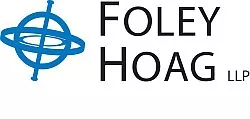- within Environment topic(s)
- within Media, Telecoms, IT and Entertainment topic(s)
On July 17, 2025, the U.S. Environmental Protection Agency
("EPA") announced a direct final rule and companion
proposal extending several compliance deadlines related to coal
combustion residuals ("CCR"). The direct final rule,
which was published on the Federal Register on July 22, 2025, creates a
new option for owners and operators of active facilities or
inactive facilities with a legacy CCR surface impoundment to comply
with certain reporting requirements and extends groundwater
monitoring deadlines for owners and operators of CCR management
units ("CCRMUs").
Under the Biden Administration's "legacy" CCR Final Rule, which went
into effect on November 8, 2024, coal power plant operators were
required to complete a two-part Facility Evaluation Report
("FER") with different deadlines for completion of each
part:
- FER Part 1, originally due on February 9, 2026, involved the thorough review of readily and reasonably available records regarding where CCR was either routinely and systematically placed on land, or where facility activities otherwise resulted in measurable accumulations of CCR on land.
- FER Part 2, due on February 8, 2027, documents the conclusions of a physical evaluation of the facility to address any data and information gaps identified in FER Part 1.
Under the new direct final rule, facility owners may now
opt to merge FER Part 1 and FER Part 2 into a single submission,
due on February 8, 2027. This change allows regulated
entities to prepare the historical document review of FER Part 1
concurrently with the on-the-ground investigation required by FER
Part 2.
Several companies identified challenges in preparing the FER Part 1
report by the February 2026 deadline from the Biden-era legacy CCR
rule due to difficulties obtaining, accessing, and reviewing
historical documentation. Owners and operators may still complete
FER Part 1 as a separate report by the original February 9, 2026
compliance deadline, but the new framework is intended to grant
more flexibility to regulated facilities.
Though the direct final rule does not modify the existing FER Part
2 deadline or eliminate any of the substantive requirements of FER
Part 1, in the companion proposed rule, EPA is additionally
soliciting comments on an alternative that extends the deadlines to
prepare FER Part 2 by 12 months. If EPA receives comments
convincing the agency that extending the FER Part 2 deadline is
warranted, the agency will withdraw the direct final rule and
pursue such an extension through standard rulemaking
procedures.
Additionally, owners and operators of CCRMUs as defined by the
legacy rule will see an extension to their requirements to
implement groundwater monitoring systems. The deadline for
CCRMU owners and operators to design and install a groundwater
monitoring system, develop a groundwater sampling and analysis
plan, collect independent samples, and initiate detection and
assessment monitoring has been extended 15 months (from May 8, 2028
to August 8, 2029). EPA cited several reasons for this
change, including EPA's original underestimation of the
universe of CCRMUs, national labor shortages, contractor and
laboratory backlogs, and the impact of overlapping compliance
deadlines.
On July 10, 2025, EPA also issued a memorandum substantially rescinding an April
2024 guidance memorandum regarding the identification and
elimination of "free liquids" in CCR surface impoundments
and landfills (the "Free Liquids Memorandum"). Citing
concerns from the regulated community that the Free Liquids
Memorandum had "caused confusion" regarding new or
modified CCR requirements, EPA's July 10 memo clarifies that
the Free Liquids Memorandum does not impose legally binding
requirements on EPA, states, or regulated entities (though it
stopped short of outright withdrawing the Free Liquids Memorandum).
The agency "intends to provide further clarification" on
the issues addressed by the Free Liquids Memorandum "at a
later time." In the absence of new definitive guidance,
regulated entities are left with some latitude to interpret the
legacy CCR rule's complicated standards for the elimination of
free liquids from CCR surface impoundments and landfills.
The newest updates from EPA regarding Biden-era CCR rules are part
of the agency's larger deregulatory shift announced by EPA Administrator Lee Zeldin in
March 2025, which included a promise to take swift action on the Coal Ash Program. In
EPA's July 17, 2025 press release announcing the direct final rule
and companion proposal, Zeldin stated that the changes
"provide much needed regulatory relief for the power sector
and help deliver on the commitments outlined on the greatest day in
deregulatory history to unleash American energy, lower costs for
Americans, and work hand-in-hand with our state partners to advance
our shared mission."
Unless EPA receives adverse comments, the final rule will go into
effect on January 22, 2026, six months after its publication in the
Federal Register. If EPA receives adverse comments within 30 days,
the rule will be subject to traditional notice-and-comment
rulemaking. Comments on both the direct final rule and companion
proposed rule are due on August 21, 2025.
To view Foley Hoag's Law and the Environment Blog please click here
The content of this article is intended to provide a general guide to the subject matter. Specialist advice should be sought about your specific circumstances.



